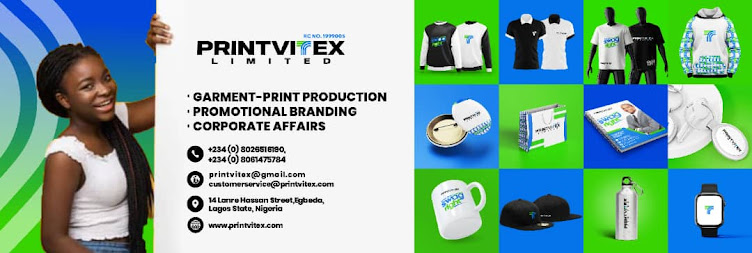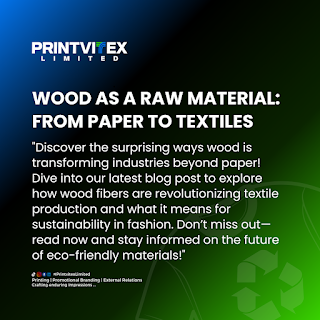With globalisation and cultural exchange, it's essential to remember that not every tradition or celebration is universally embraced.
Nigeria is home to over 250 distinct ethnic groups, each with its own languages, customs, and traditions. The diversity is astounding, and it has nurtured a unique cultural mosaic that differs significantly from many Western traditions.
Halloween, originating in Celtic practices, has evolved into a celebration of costumes, spooky stories, and trick-or-treating in many parts of the world. However, it hasn't gained a significant foothold in Nigeria, where cultural and religious practices predominantly shape the nation's festive calendar. The lack of enthusiasm for Halloween is a reminder that certain cultural values are deeply rooted and could be resistant to change.
Here's what brands can learn from this:
Respect Tradition:
Brands should understand that attempting to introduce foreign traditions that conflicts with a local context can backfire. Starbucks and its holiday cups is a great example.
In 2015, Starbucks introduced a simple, red holiday cup with no explicit Christmas symbols, intending to create a more inclusive design that would resonate with a broader audience. However, the move was met with criticism in some regions, particularly in the United States, where some consumers believed that the company was abandoning its traditional holiday cup designs and, in doing so, diminishing the significance of Christmas.
While Starbucks' intention was to create a more neutral and inclusive design, it did not fully consider the local context and cultural nuances in various regions. This resulted in controversy and backlash, with some customers feeling that their cultural traditions were not being respected.
The lesson from this example is that brands need to be mindful of the local context and cultural sensitivities when introducing or adapting traditions. What may be seen as a small design change in one culture can have significant cultural implications in another. Therefore, it's crucial for brands to conduct thorough research and engage with local communities to understand the cultural significance of traditions and symbols before making changes or introducing foreign customs. This approach helps prevent a backlash and fosters a more respectful and inclusive brand image.
Adapt and Integrate:
Rather than imposing their own cultural values, brands should strive to integrate with and adapt to the existing culture. This demonstrates a willingness to coexist and engage respectfully with the local community. One notable example of a brand that has successfully achieved this is McDonald's in India.
When McDonald's entered the Indian market in the late 1990s, it faced a significant challenge. India is a culturally diverse country with a rich culinary heritage deeply rooted in vegetarianism and various dietary restrictions. McDonald's, known for its beef-based burgers, needed to adapt its menu and approach to cater to the Indian market. Here's how McDonald's demonstrated a willingness to coexist and engage respectfully with the local culture:
- Vegetarian Focus: McDonald's India introduced a predominantly vegetarian menu, in line with the dietary preferences of the Indian population. This meant offering items like the McAloo Tikki burger (made from potatoes and spices) and a range of vegetarian wraps and sandwiches. Beef and pork were excluded from the menu.
- Customisation: McDonald's allowed for a high level of customization, recognizing that Indian consumers have varying tastes and dietary restrictions. Customers can choose from a wide range of condiments, sauces, and spice levels to tailor their meals to their preferences.
- Cultural Sensitivity: The Company showed cultural sensitivity in its advertising and branding. It respected Indian festivals and traditions by running campaigns that celebrated Diwali, Holi, and other significant cultural events.
- Localisation: McDonald's also embraced regional flavors and tastes. It introduced region-specific menu items like the McVeggie, which includes regional spices and ingredients.
This approach allowed McDonald's to not only coexist with the existing culture but also thrive in India. It adapted its offerings to align with the cultural values and dietary preferences of the local community. Today, McDonald's in India is one of the leading fast-food chains, and its success can be attributed to its respectful integration with the local culture, a valuable lesson for brands expanding into culturally diverse markets.
Local Sensitivity:
Cultural sensitivity should be a cornerstone of brand strategy. Brands should be aware of religious, social, and cultural events that are significant in the local context. This awareness helps in crafting more resonant and culturally sensitive marketing campaigns. An excellent example is Coca-Cola's "Ramadan Sharing Is Happiness" campaign in the Middle East.
During the holy month of Ramadan, Muslims fast from sunrise to sunset and break their fast with a meal called "Iftar." This tradition is a significant and sacred part of Ramadan, emphasizing family, togetherness, and sharing. Coca-Cola recognized the cultural significance of Iftar and used it as an opportunity to create a resonant marketing campaign.
In this campaign:
- Timing and Understanding: Coca-Cola recognized the importance of Ramadan in the Middle East and the tradition of breaking the fast with a meal. They understood that this is a time when families and friends come together to share meals and create lasting memories.
- Message of Sharing: Coca-Cola's "Ramadan Sharing Is Happiness" campaign centered around the idea of sharing and happiness during this special time. The campaign featured heartwarming commercials and print advertisements that depicted people coming together, sharing meals, and celebrating the spirit of Ramadan.
- Customised Packaging: Coca-Cola introduced special edition Ramadan-themed packaging, with messages of well-wishing for the holy month. The packaging featured traditional Arabic designs and calligraphy, resonating with the local culture.
- Community Engagement: Coca-Cola actively engaged with the community by hosting Iftar events and distributing free beverages to people as they broke their fast. This not only reinforced the message of sharing and togetherness but also actively participated in the local cultural events.
This campaign was not just about marketing products; it was about understanding and respecting the local culture, values, and traditions. Coca-Cola's approach was highly appreciated by the local community, and the brand became closely associated with the spirit of Ramadan in the Middle East.
The "Ramadan Sharing Is Happiness" campaign exemplifies how brands, by being aware of the cultural significance of local events, can create campaigns that resonate with the audience, show cultural sensitivity, and contribute positively to the community they serve. It's a testament to the importance of understanding and respecting cultural and religious values in marketing.
Diversity and Inclusion:
Celebrate the diversity of cultural values within your target market. Promote inclusion, acknowledging and respecting all cultural backgrounds. A diverse and inclusive approach fosters positive brand perception. An example of this is the Airbnb's "We Accept" campaign.
In 2017, Airbnb launched a powerful campaign in response to a growing concern of discrimination and exclusion within the travel and hospitality industry. The "We Accept" campaign was designed to emphasize Airbnb's commitment to inclusion and respect for all cultures, backgrounds, and identities.
Here's how Airbnb's campaign promoted diversity and inclusion:
- Powerful Message: Airbnb released a compelling advertisement with a clear message: "We believe no matter who you are, where you're from, who you love, or who you worship, we all belong. The world is more beautiful the more you accept." This message conveyed the brand's commitment to inclusivity and respect for all cultural backgrounds.
- Multicultural Representation: The campaign featured a diverse range of hosts and guests, representing various ethnicities, genders, and lifestyles. This not only demonstrated Airbnb's recognition of the diverse world its platform serves but also celebrated this diversity.
- Community Commitment: Airbnb initiated programs to support underrepresented communities. This included partnerships with organizations like the NAACP to address discrimination in the travel industry and providing free short-term housing to people affected by disasters.
- Openness to Feedback: Airbnb actively sought feedback from its community and made changes based on user experiences. The company introduced anti-discrimination policies, increased transparency, and implemented tools for reporting discrimination.
The "We Accept" campaign and Airbnb's subsequent actions were an embodiment of promoting diversity and inclusion. By actively addressing the issue of discrimination, celebrating diversity, and committing to making a positive impact, Airbnb not only improved its brand perception but also set a benchmark for how companies can embrace cultural diversity within their target market. This approach emphasized that businesses can play a crucial role in fostering inclusivity and respect for all cultural backgrounds.
Cultural Collisions and Branding:
The clash of cultural values can have significant implications for brands. Introducing a foreign celebration or tradition without being sensitive to the local culture can lead to a negative backlash, damage the brand's reputation can result in:
- Alienation: The local community may feel alienated or disrespected, leading to a decline in brand loyalty and trust.
- Resistance: Attempts to impose foreign cultural values can be met with resistance, causing friction between the brand and the community.
- Financial Consequences: Alienating a significant portion of the market can lead to financial losses.
Brands should approach cultural integration and marketing with a balanced perspective. While cultural exchange and fusion can be enriching, it should be done with respect and sensitivity.
So, here's a guide for brands to navigate the cultural landscape effectively:
- Listen and Learn: Start by listening to and learning from the local community. Understand their values, traditions, and needs.
- Collaborate: Collaborate with local experts and influencers who can help you navigate the cultural landscape and make informed decisions.
- Cultural Fusion: If you wish to introduce elements from other cultures, do so in a way that respects and integrates with the local culture. Blend, rather than impose.
- Educate: Educate your audience about the traditions you are introducing and their significance, fostering mutual understanding.
- Adapt and Evolve: Be prepared to adapt your approach based on the feedback and responses from the local community.
Bottomline:
It is essential to navigate cultural integration with care and consideration to maximize brands efforts.
Printvitex Limited partners with brands to get optimal value from their promo objectives!
Thank you for reading and see you on the next issue!












